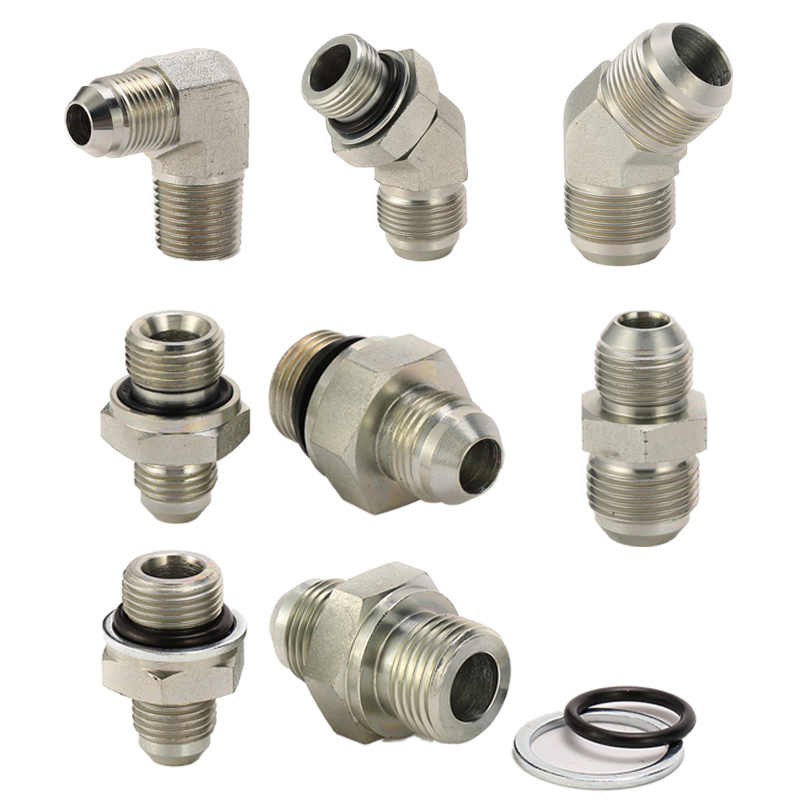Hydraulic Tube Assembly supplier in China
※ High-temperature resistance
※ High-pressure resistance
※ Corrosion-resistance
※ Strength
Hydraulic Tube Assembly Manufacturer in China
Hydraulic tube assemblies are metal components that allow fluids to transport in hydraulic systems. Topa’s hydraulic tube assemblies include tubes and hydraulic fittings, and they are easy to operate in hydraulic systems. Topa also offers a complete range of hydraulic tube assemblies with high-quality assurance. Welcome to order.
Hydraulic Tube Assembly Product List
Hydraulic tubes involve a wide variety of types. In terms of material, stainless steel, steel, and carbon steel are commonly used. We also provide seamless and welded hydraulic tube assemblies. You can check the pictures below to find the product. If you don’t find the product you need, we also offer custom hydraulic tube assemblies.
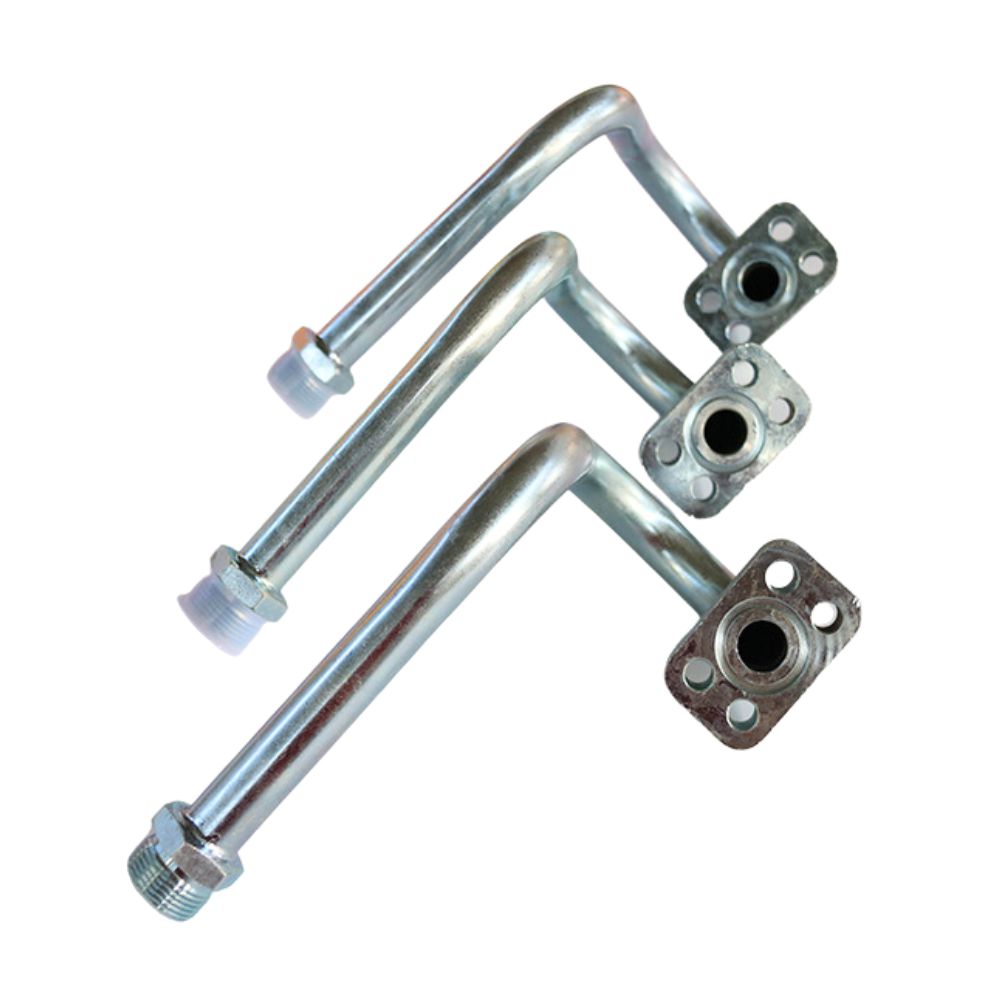
Hydraulic tube assembly
Hydraulic tube assembly, made of steel, and carbon steel.

Stainless steel hydraulic tube assembly
High-quality stainless steel, corrosion-resistence.

Hydraulic steel tube assembly
Made of strong steel, for use with heavy machines.
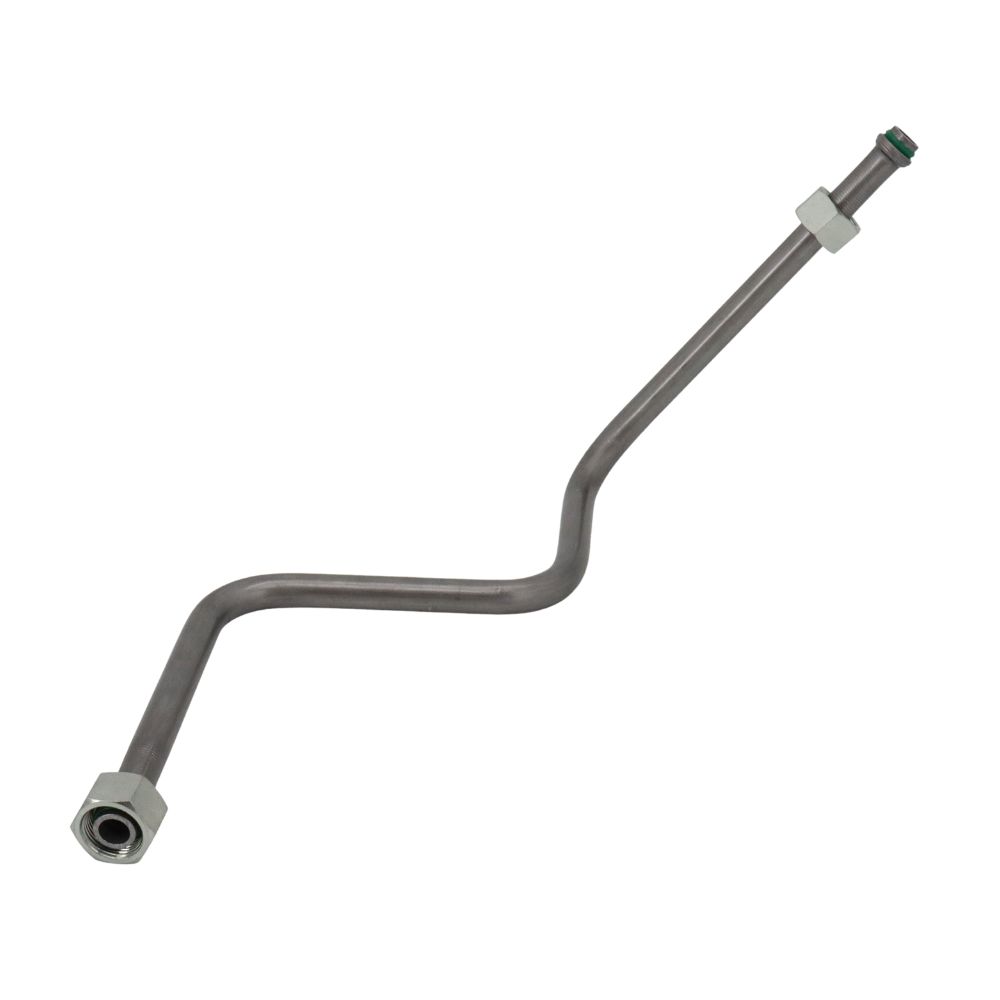
Carbon steel hydraulic tube assembly
Carbon steel hydraulic tube assembly, an economical choice.

CDS hydraulic tube assembly
Cold bending seamless tube assembly.

Custom hydraulic tube assembly
Topa offers custom hydraulic tube assembly services.
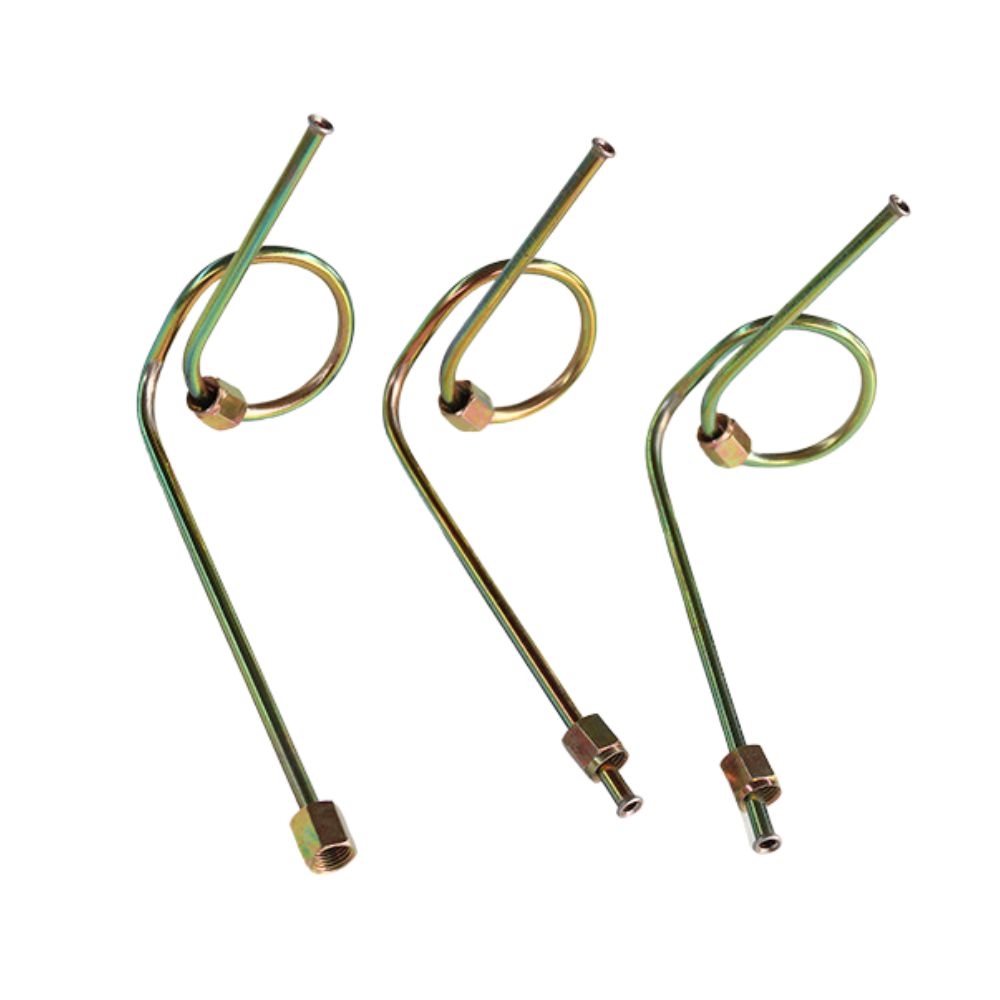
Cold bending hydraulic tube assembly
CDS/Cold bending hydraulic tube assembly.

Weld hydraulic tube assembly
Weld hydraulic tube assembly, can weld with hydraulic fittings.

Cold drawn seamless hydraulic tube assembly
Cold drawn seamless hydraulic tube assembly.

Cutting sleeve hydraulic tube assembly
Cutting sleeve hydraulic tube assembly, for use with machines.

Hydraulic seamless tube assembly
Hydraulic seamless tube assembly, no leaks.

Liugong heavy equipment 915EHD tube assembly
For use with the Liugong tractor, forklift, and dumper.

LonKing 6075 hydraulic tube assembly
For use with Lonking heavy equipment.
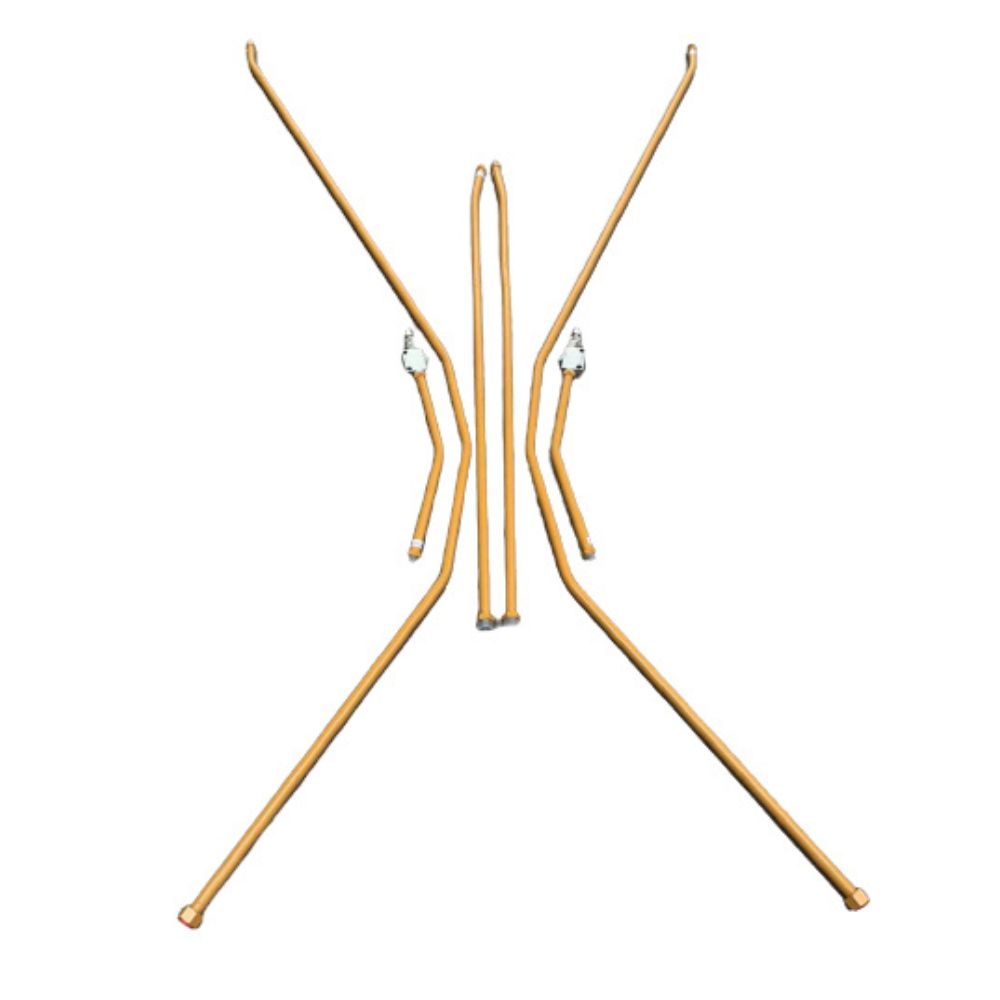
Lovol agriculture equipment 130 tube assembly
Foer use with Lovol agriculture heavy machine.

SK305LC-10 hydraulic tube assembly
SK305LC-10 type hydraulic tube assembly, made of heavy steel.

SY55 steel tube assembly
SY55 steel tube assembly, for use with agriculture machines.
Hydraulic Tube Assembly Video
This video is about tube cutting, cold bending, packaging, and other steps of hydraulic tube assemblies. You can click this video to check more details. If you want to know more information, please contact us.
Topa hydraulic fittings
Topa, as the best manufacturer of hydraulic fittings, has perfect production, quality inspection, and packaging processes to meet all customers’ needs. And Topa can also provide custom hydraulic fittings, welcome to order.
Your Reliable Hydraulic Tube Assembly Manufacturer
At present, most hydraulic applications use hydraulic tubes and hoses together, which can adapt to many hydraulic applications. This pipeline combination takes advantage of two different pipes, greatly improving the efficiency of the hydraulic system.
The advantages of Topa hydraulic tube assemblies are remarkable:
※ High-temperature resistance
※ High-pressure resistance
※ Rust resistance
※ Long service life
※ Fast heat dissipation
※ Good conductivity
Topa, as one of the leading suppliers of hydraulic fittings in China, also provides excellent hydraulic tube assemblies. Both in terms of quality and size, we are committed to providing the best tube assemblies.
If you need hydraulic tube assemblies, please feel free to come to us with your hydraulic tube drawings and we will arrange the best technicians and service personnel to provide you with a quality shopping experience.
Why choose us
Topa is one source of certified compatible hydraulic hoses, hydraulic fittings, and accessories providers. As per one of the top hydraulic hose fittings manufacturers, we have more than 15 years of experience and our CEO has more than 20 years of experience. Topa has advanced equipment and strict quality control systems, Make us continue to progress and develop. We have a special advantage:
-provide tailored hydraulic fluid solutions
-knowledgeable and experienced engineers and sales
-Large inventory and prompt delivery
-Provide reliable leak-free connection solutions
-Flexibility to meet most of customer needs
-Guaranteed after service
-Free sample
Hydraulic Tube Assembly Application
Hydraulic tube assemblies are highly efficient pipeline components that can play a big role in many hydraulic systems, such as factories, agriculture, mining, ships, municipal, oil, and gas.

Oil and gas
Hydraulic tube assemblies are resistant to high pressure and high temperature and are not easily corroded by fluids after special treatment. In the field of oil and gas, tube assemblies can play a great potential.

Industry
Hydraulic tube assemblies can be used in fixed or narrow positions in major hydraulic applications in factories. All factories use hydraulic tube assemblies, which are used in combination with hoses.

Ship
Large and small vessels use hydraulic tubes in their hydraulic systems. Hydraulic tubes are usually fixed in one position, and will not be displaced due to wind and waves, causing unnecessary losses.
Hydraulic Tube Assembly Related Products
Topa is a professional manufacturer of hydraulic hose fitting. We provide a one-stop service. A variety of hydraulic products for you to choose from. Click the picture below for more hydraulic products.
Hydraulic tube assembly quality control





Hydraulic Tube Assembly FAQ
What is a hydraulic tube assembly?
A hydraulic tube assembly is a metal pipe assembly made up of hydraulic tubes, together with hydraulic fittings, to transport fluids safely and smoothly.
What are the types of hydraulic tube assemblies?
Cold bending tube assemblies, cold drawn tube assemblies, seamless tube assemblies, weld tube assemblies, and cutting sleeve hydraulic tube assemblies.
What are the advantages of hydraulic tube assemblies?
High-pressure resistance, less abrasion, high-temperature resistance, good thermal conductivity, and very good electrical conductivity.
What is the difference between a hydraulic tube assembly and a hydraulic hose assembly?
In short, the advantages of tubes and hoses are different. The tube has strong heat dissipation, good electrical conductivity, high-pressure resistance, and corrosion resistance, while the hose is more flexible, shock and wear resistant.
How to choose the right hydraulic tube assembly?
Choose the right rigid tube according to your own needs.
Where the hydraulic tube assembly is used?
Mining, oil and gas, motor vehicle, industrial, marine, material processing, and other industries.
How to make a hydraulic tube assembly?
After cutting and cold bending by the CNC machine, the corresponding fittings are installed or welded on, so that the assembly can be completed.
What materials are available for the hydraulic tube assemblies?
Stainless steel tube assemblies, steel tube assemblies, carbon steel tube assemblies.
Can Topa provide a custom hydraulic tube assembly service?
Yes, you just need to contact us with diagrams and drawings, and your needs for the hard tube.
How long does it take to make a hydraulic tube assembly?
Normally, about 30-60 days.








